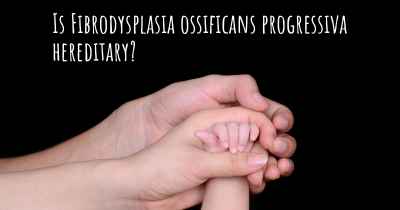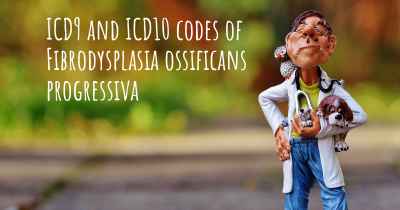What is the history of Fibrodysplasia ossificans progressiva?
When was Fibrodysplasia ossificans progressiva discovered? What is the story of this discovery? Was it coincidence or not?

Fibrodysplasia ossificans progressiva (FOP) is an extremely rare genetic disorder characterized by the progressive formation of bone in muscles, tendons, and ligaments. This condition was first described in the medical literature in the early 19th century, but it wasn't until the late 20th century that significant advancements were made in understanding its underlying causes and mechanisms.
The Early Discoveries:
The earliest known case of FOP dates back to the 17th century, but it wasn't until 1736 that the condition was formally documented by the French physician Guy Patin. However, it wasn't until the early 19th century that the term "fibrodysplasia ossificans progressiva" was coined by the renowned French physician Victor A. Lannelongue in 1891.
Advancements in the 20th Century:
Throughout the 20th century, several important discoveries were made regarding FOP. In the 1940s, the American physician R. Wayne Baranowski conducted extensive research on the condition and proposed that FOP was a hereditary disorder. However, it wasn't until the 1970s that the genetic basis of FOP was elucidated.
The Genetic Basis:
In 2006, a groundbreaking discovery was made by a team of researchers led by Dr. Frederick S. Kaplan and Dr. Eileen M. Shore. They identified a specific mutation in the ACVR1 gene as the cause of FOP. This gene encodes a receptor for a protein called bone morphogenetic protein (BMP), which plays a crucial role in bone and cartilage development.
Understanding the Mechanisms:
Further research has revealed that the ACVR1 mutation leads to the overactivation of the BMP signaling pathway, causing abnormal bone formation. Normally, BMP signaling is tightly regulated and involved in the development and repair of bone and cartilage. However, in individuals with FOP, this pathway becomes dysregulated, resulting in the formation of extra bone in soft tissues.
Prevalence and Inheritance:
FOP is an extremely rare condition, with an estimated prevalence of about 1 in 2 million individuals worldwide. It is inherited in an autosomal dominant pattern, which means that a person with FOP has a 50% chance of passing the condition on to each of their children.
Challenges and Treatment:
FOP poses significant challenges for affected individuals due to the progressive nature of the condition. The formation of extra bone restricts movement and can lead to severe disability. Unfortunately, there is currently no cure for FOP, and treatment options are limited. Surgical interventions to remove excess bone are generally discouraged as they can trigger further bone formation. Instead, management focuses on symptom relief, pain control, and supportive care.
Research and Hope for the Future:
Despite the challenges, ongoing research into the underlying mechanisms of FOP has provided hope for potential future treatments. Scientists are investigating various approaches, including targeting the dysregulated BMP signaling pathway and exploring gene therapies to correct the ACVR1 mutation.
In conclusion, the history of Fibrodysplasia ossificans progressiva spans several centuries, with significant advancements made in the understanding of its genetic basis and underlying mechanisms in the 20th and 21st centuries. While there is currently no cure for FOP, ongoing research offers hope for improved treatments and ultimately a better quality of life for individuals living with this rare and debilitating condition.








